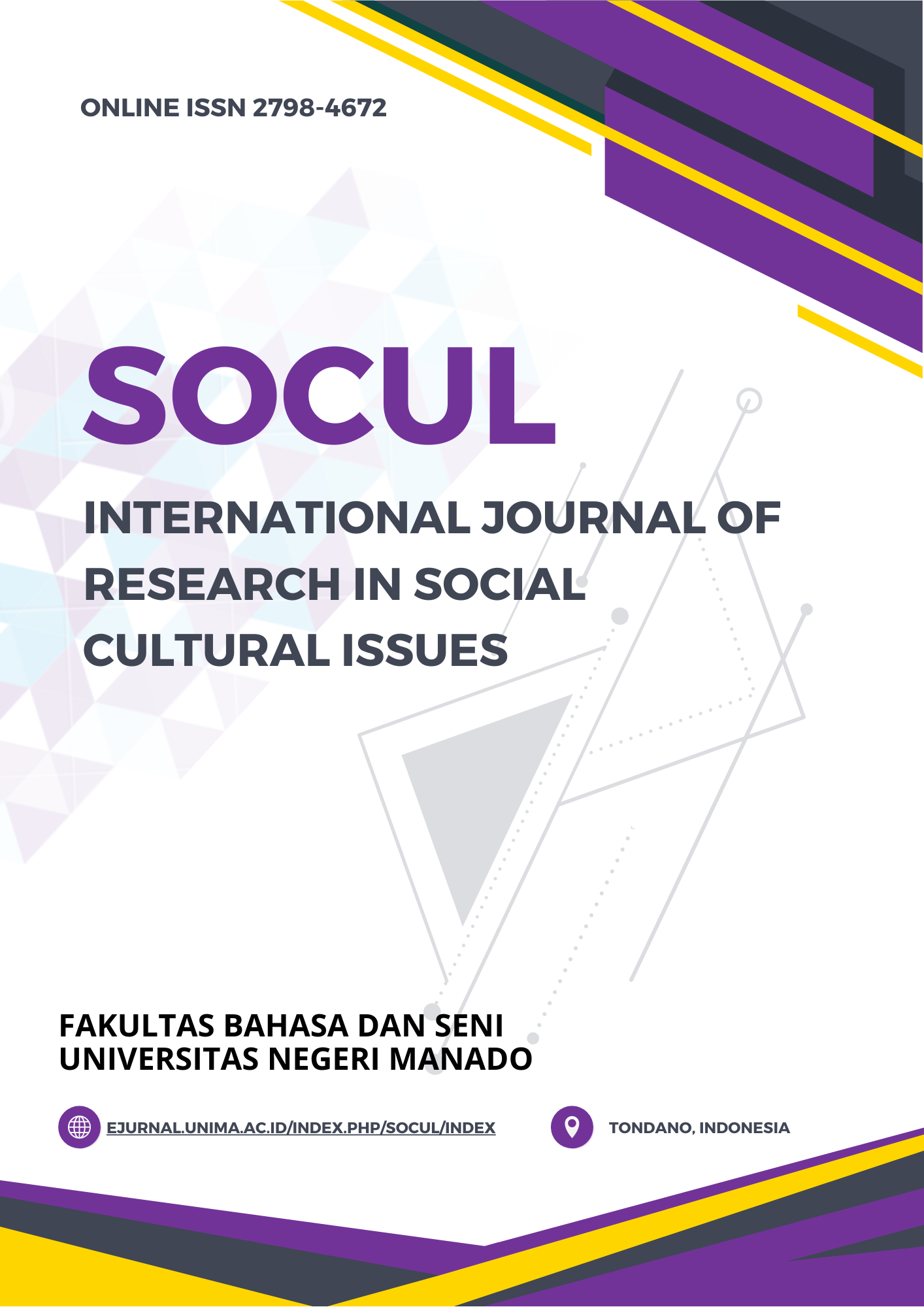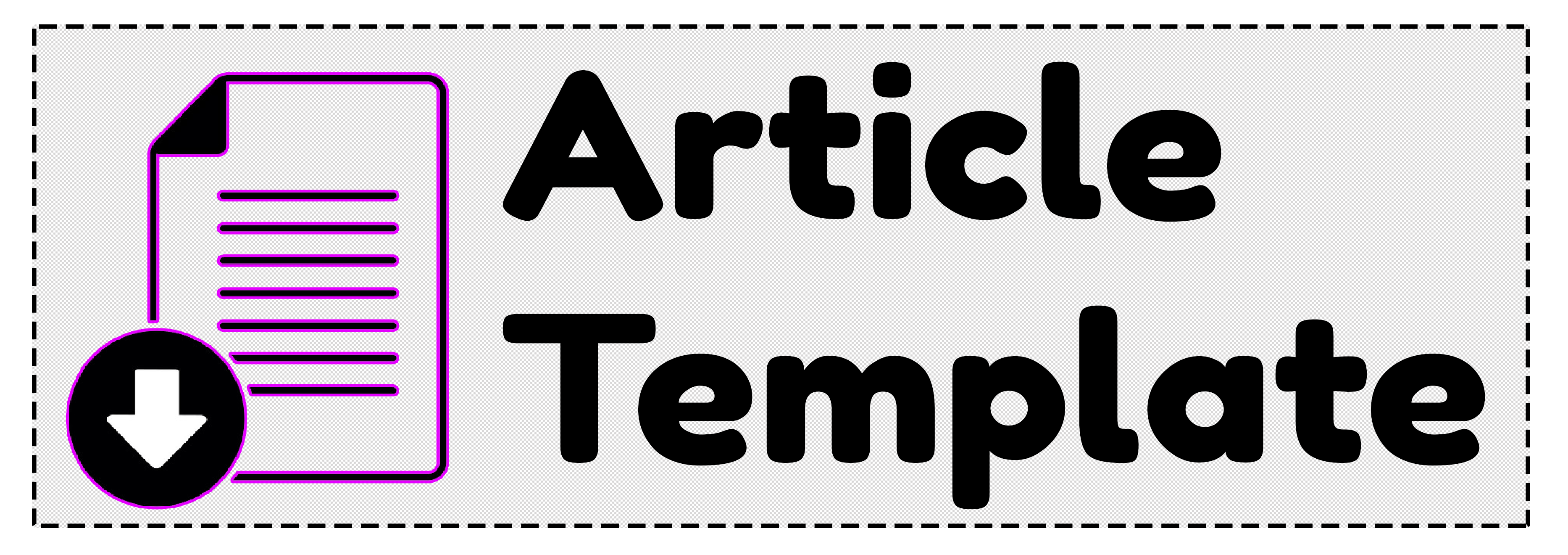STRUCTURALISM AND IMAGINATIVE GEOGRAPHY: DECONSTRUCTING GORONTALO LEGENDS FOR TOURISM DEVELOPMENT
DOI:
https://doi.org/10.53682/soculijrccsscli.v4i3.11950Keywords:
Tourism Literature, Imaginative Geography, StructuralismAbstract
This study examined three Gorontalo legends: The Origin of the Boalemo People, The Legend of the Origin of the Limboto Nation, and The Legend of the Origin of the Limutu Kingdom, to reveal how traditional narratives shape the representation of imaginary spaces in tourism areas. The research aimed to analyze mechanisms of cultural identity construction and spatial representation by integrating Levi-Strauss structuralism and Edward Said's Imaginative Geography theory. A layered analytical approach was applied, combining structural narrative analysis with an examination of spatial representation. Structuralism revealed recurring patterns across the legends: initial equilibrium, disruptive transformation, journeys as rites of passage, and resolution through new order. Binary oppositions (origin vs. destination, sacred vs. profane) emphasized spatial reinterpretation. Character archetypes (founders, helpers) reinforced themes of power legitimacy and collective identity. Imaginative Geography analysis demonstrated how mental maps positioned Limboto as a narrative center, with supernatural and cultural exoticization creating a mystical distinction from conventional destinations. Boundaries clarified territoriality, framing visitors as “imaginary travelers". The integration of approaches demonstrated that imaginary space functions as a primary motivator in tourism decisions. These legends position Gorontalo as a culturally rich, historically layered destination, enabling tourists to envision transformative experiences as “cultural explorers" and “narrative inheritors". Findings underscore the role of local narratives in sustainable tourism development. By embedding spaces with spiritual and historical significance, legends offer authentic engagement beyond superficial attractions. This study implies that leveraging traditional narratives can enhance destination branding, fostering tourism that respects cultural heritage while appealing to travelers seeking meaningful experiences. Strategic use of such stories could redefine regional tourism paradigms, prioritizing narrative depth and community identity.
References
Arini, N. N., Darma Putra, I. N., & Bhaskara, G. I. (2021). Promosi Pariwisata Bali Utara Berbasis Sastra Melalui Novel “Aku Cinta Lovina†dan “Rumah Di Seribu Ombak.†Jurnal Master Pariwisata (JUMPA), 305. https://doi.org/10.24843/jumpa.2021.v08.i01.p16
Busby, G., & Klug, J. (2001). Movie-induced tourism: The challenge of measurement and other issues. Journal of Vacation Marketing, 7(4), 316–332. https://doi.org/10.1177/135676670100700403
Claude Levi-Strauss. (1963). Structural Anthropolohy. Basic Books, Inc. Publishers. https://monoskop.org/images/e/e8/Levi-Strauss_Claude_Structural_Anthropology_1963.pdf
Dallen J. Timothy & Stephen W. Boyd. (2003). Heritage Tourism. Prentice Hall.
Darmadali, W. S. (2022). The Impact of Literature for Indonesian Sustainable Tourism. ELS Journal on Interdisciplinary Studies in Humanities, 5(4), 706–709. https://doi.org/10.34050/elsjish.v5i4.24795.
Edward Said. (1978). Orientalism. Pantheon Books.
Edward Said. (1993). Culture and Imperialism. A Division of Random House, Inc. https://monoskop.org/images/f/f9/Said_Edward_Culture_and_Imperialism.pdf
Ester Yunginger. (2007). Cerita Rakyat Gorontalo. Pusat Bahasa Departemen Pendidikan Nasional.
Herbert, D. (2001). Literary places, tourism and the heritage experience. Annals of Tourism Research, 28(2), 312–333. https://doi.org/10.1016/s0160-7383(00)00048-7.
Homi K. Bhaba. (2004). The Location of Culture. Routledge.
Hoppen, A., Brown, L., & Fyall, A. (2014). Literary tourism: Opportunities and challenges for the marketing and branding of destinations? Journal of Destination Marketing & Management, 3(1), 37–47. https://doi.org/10.1016/j.jdmm.2013.12.009.
Johnston, R. (2005). The Colonial Present: Afghanistan, Palestine, Iraq. Annals of the Association of American Geographers, 95(3), 719–723. https://doi.org/10.1111/j.1467-8306.2005.00482_13.x
Kirshenblatt-gimblett, B. (2004). Intangible Heritage as Metacultural Production1. Museum International, 56(1–2), 52–65. https://doi.org/10.1111/j.1350-0775.2004.00458.x.
Kuswarini, P., Masdiana, G Junus, F., & Hasyim, M. (2022). Developing Literary Tourism in South Sulawesi by Involving Folklore and Ideological Translation: A Conceptual Analysis. In N. Haristiani, Y. Yulianeta, Y. Wirza, W. Gunawan, A. A. Danuwijaya, E. Kurniawan, D. Darmawangsa, S. Suharno, N. Nafisah, E. D. A. Imperiani, A. H. Lubis, B. Hermawan, & E. R. Fauzy (Eds.), Proceedings of the Sixth International Conference on Language, Literature, Culture, and Education (ICOLLITE 2022) (Vol. 722, pp. 434–441). Atlantis Press SARL. https://doi.org/10.2991/978-2-494069-91-6_68.
Laxmiwaty Dai, S., Asti Ayuningsih, Betly Taghulihi, Vidhia Agmareina Hirto, Wildayanti Limpas, Z., & Sunarti, S. (2023). Urban Tourism: A Potential as Tourism Attraction in Gorontalo City. International Journal of Tourism Business Research, 2(1), 15–21. https://doi.org/10.29303/intour.v2i1.700
Melanie Smith & Mike Robinson. (2006). Cultural Tourism in a Changing World. Channel View Publications.
Ni Nyoman Arini & I Putu Tiana Raditya. (2023). Kajian Literary Tourism: Daya Tarik Wisata Ubud Dinarasikan Melalui Latar Tempat Dalam Karya Sastra Novel. Jurnal Ilmiah Hospitality Management, 13(2). https://doi.org/10.22334/jihm.v13i2.
Rene Wellek & Austin Warren. (1962). Theory of Literature. Harcourt, Brace & Wirld. https://dn790007.ca.archive.org/0/items/theoryofliteratu00inwell/theoryofliteratu00inwell.pdf
Richards, G. (2018). Cultural tourism: A review of recent research and trends. Journal of Hospitality and Tourism Management, 36, 12–21. https://doi.org/10.1016/j.jhtm.2018.03.005.
Simanihuruk, B., Surbakti, A., I Nyoman Darma Putra, & Eddy Setia. (2022). Peran Toba Dreams Dalam Pengembangan Destinasi Wisata Danau Toba: Pendekatan Sastra Pariwisata. GERAM, 10(2), 1–12. https://doi.org/10.25299/geram.2022.vol10(2).10665
Taylor, R., Ashcroft, B., Griffiths, G., Tiffin, H., Lazarus, N., Amuta, C., & Schipper, M. (1992). The Empire Writes Back: Theory and Practice in Post-Colonial Literatures. The Modern Language Review, 87(4), 961. https://doi.org/10.2307/3731472.














